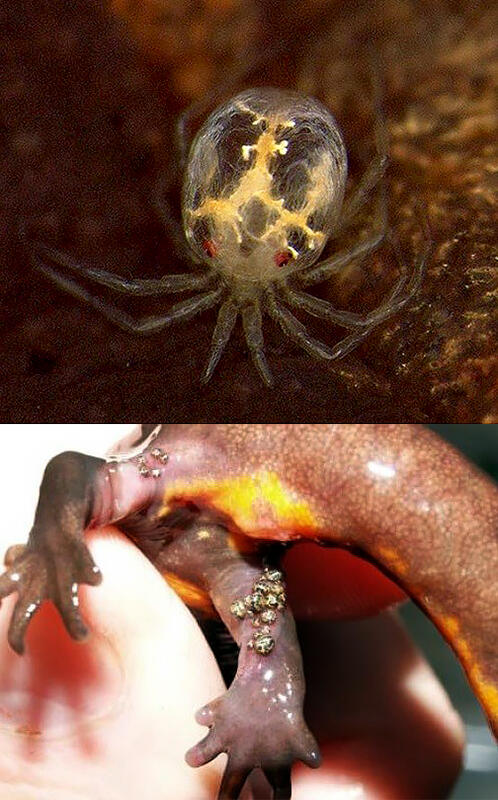Professor Satoshi Shimano of the Hosei University Science Research Center/Faculty of Intercultural Communication, through joint research with the National Museum of Nature and Science, discovered and described four new species of the subgenus Lurchibates in China parasitizing the body surfaces of two newt species of the genus Pachytriton and Paramesotriton.
The subgenus Lurchibates is a group of the globally distributed genus Hygrobates; since its discovery in 2002, 11 species have been discovered, including the new species discovered by the research group. There are 6000 species of the genus Hygrobates known in the world, but Hygrobates with an ecology similar to that of the subgenus Lurchibates, which parasitizes amphibians, are rare. The subgenus Lurchibates contains approximately 150 species, is distributed worldwide, and parasitizes the body surface and oral cavity of three genera of Salamandridae, which are distributed from East Asia to Southeast Asia. In other Hygrobates genera, larvae parasitize insects, and adults spend their lives as free-living predators, but this subgenus spends its entire life on the body surface of the newt. In addition, it has a very special ecology: it has a special pedipalp that bites into the skin of newts to affix themselves to their body and has long chelicerae that cuts through the skin of newts to facilitate parasitization.
It is thought that by parasitizing newts these water mites gain some benefits, such as protecting themselves from predators, as newts have a poisonous compound called tetrodotoxin in their skin (The same as in pufferfish). In recent years, it has been found that the host newt is also species is differentiated based on location; therefore, it was expected that there are many undescribed species of newt-parasitic water mites.
The research group conducted a detailed study of known species in addition to the four new species and described them in a form that allows comparison of morphological differences between males and females. They evaluated each species by multivariate analysis using 34 morphological traits, phylogenetic analysis using massive parallel sequencing and 28S rRNA partial sequences, and taxonomically organized the subgenus Lurchibates. Detailed morphological studies of 11 members of the Lurchibates including four new species have made it possible to identify species by morphological traits while considering phylogenetic relationships.
As a result of this study it was estimated that the relationship between the newt-parasitic water mite and the host developed gradually. There is no doubt that newt-parasitic water mites have not only co-speciated with newts but have also caused host conversion; a comparative analysis of molecular phylogenetic relationships is expected in the future. By conducting field surveys on the life history and ecology of newt-parasitic water mites, the research group will answer various questions such as "Why did such a parasitic relationship between newt and water mite evolve only in Asia?" and "Did this promote speciation of water mites?" Ultimately, it is expected that a complete picture of their evolutionary history will be clarified.

(Bottom) Newt-mites on the hind legs of a newt
(Both images provided by Kanto Nishikawa (Kyoto University).
This article has been translated by JST with permission from The Science News Ltd.(https://sci-news.co.jp/). Unauthorized reproduction of the article and photographs is prohibited.




